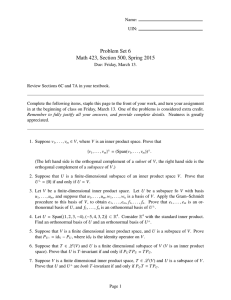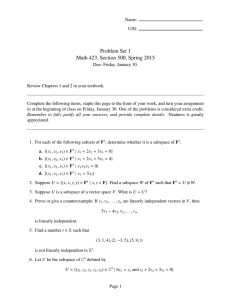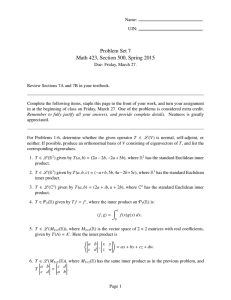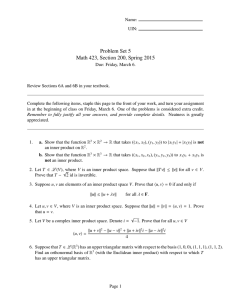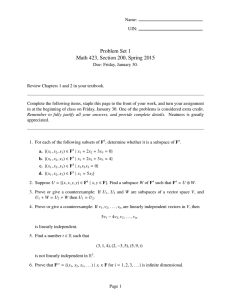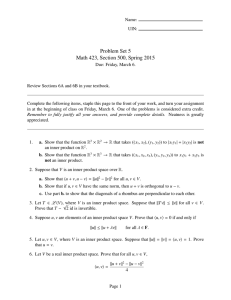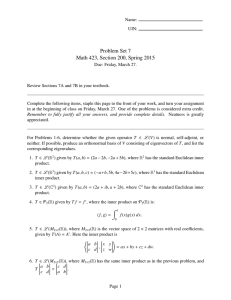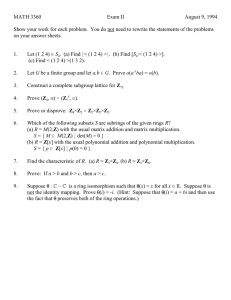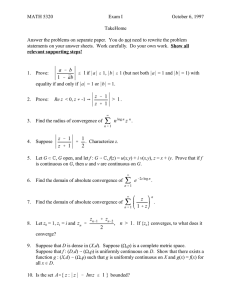Problem Set 6 Math 423, Section 200, Spring 2015
advertisement
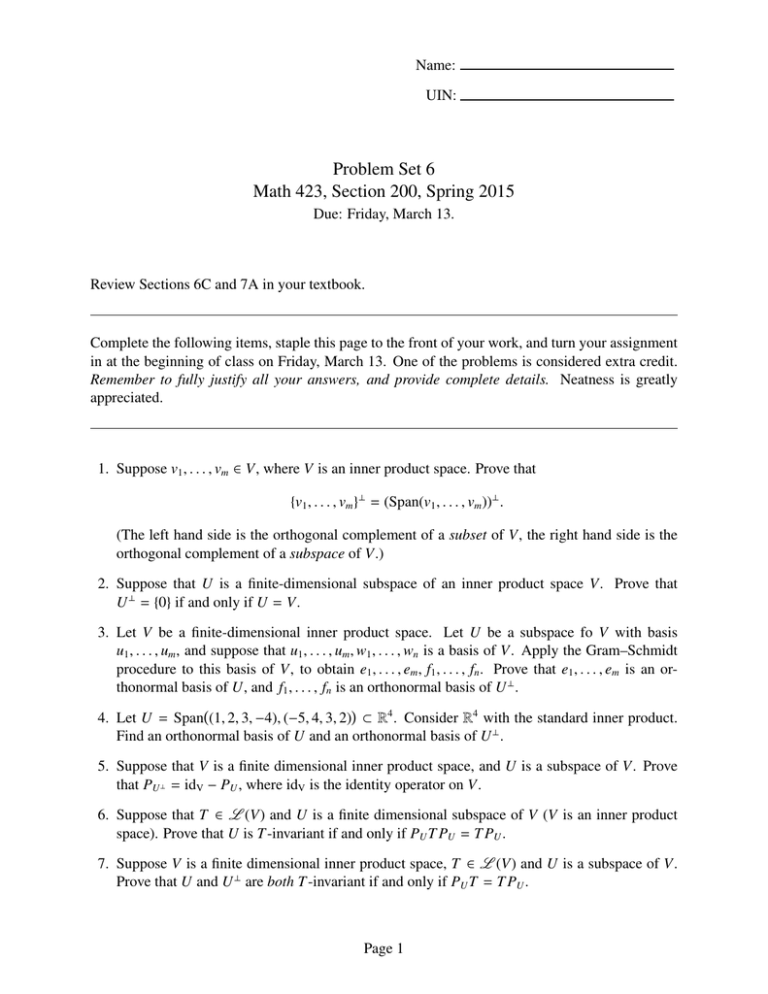
Name:
UIN:
Problem Set 6
Math 423, Section 200, Spring 2015
Due: Friday, March 13.
Review Sections 6C and 7A in your textbook.
Complete the following items, staple this page to the front of your work, and turn your assignment
in at the beginning of class on Friday, March 13. One of the problems is considered extra credit.
Remember to fully justify all your answers, and provide complete details. Neatness is greatly
appreciated.
1. Suppose v1 , . . . , vm ∈ V, where V is an inner product space. Prove that
{v1 , . . . , vm }⊥ = (Span(v1 , . . . , vm ))⊥ .
(The left hand side is the orthogonal complement of a subset of V, the right hand side is the
orthogonal complement of a subspace of V.)
2. Suppose that U is a finite-dimensional subspace of an inner product space V. Prove that
U ⊥ = {0} if and only if U = V.
3. Let V be a finite-dimensional inner product space. Let U be a subspace fo V with basis
u1 , . . . , um , and suppose that u1 , . . . , um , w1 , . . . , wn is a basis of V. Apply the Gram–Schmidt
procedure to this basis of V, to obtain e1 , . . . , em , f1 , . . . , fn . Prove that e1 , . . . , em is an orthonormal basis of U, and f1 , . . . , fn is an orthonormal basis of U ⊥ .
4. Let U = Span (1, 2, 3, −4), (−5, 4, 3, 2) ⊂ R4 . Consider R4 with the standard inner product.
Find an orthonormal basis of U and an orthonormal basis of U ⊥ .
5. Suppose that V is a finite dimensional inner product space, and U is a subspace of V. Prove
that PU ⊥ = idV − PU , where idV is the identity operator on V.
6. Suppose that T ∈ L (V) and U is a finite dimensional subspace of V (V is an inner product
space). Prove that U is T -invariant if and only if PU T PU = T PU .
7. Suppose V is a finite dimensional inner product space, T ∈ L (V) and U is a subspace of V.
Prove that U and U ⊥ are both T -invariant if and only if PU T = T PU .
Page 1
8. Let V = R3 with the standard inner product, and W = Span (1, 0, 1) . Consider the orthogonal
projection PW . Find the matrix of PW with respect to the standard basis (1, 0, 0), (0, 1, 0), (0, 0, 1)
of R3 .
9. Consider R4 with the standard inner product, and let U = Span (1, 1, 0, 0), (1, 1, 1, 2) . Find
u ∈ U such that ku − (1, 2, 3, 4)k is as small as possible.
10. Find p ∈ P3 (R) such that p(0) = 0, p0 (0) = 0 and
Z 1
|2 + 3x − p(x)|2 dx
0
is as small as possible.
11. Let CR ([−1, 1]) be the R-vector space of continuous, real-valued functions on the interval
[−1, 1], with inner product given by
Z 1
h f, gi =
f (x)g(x)dx
−1
for f, g ∈ CR ([−1, 1]). Let
U = { f ∈ CR ([−1, 1]) | f (0) = 0}.
a. Prove that U is a subspace of CR ([−1, 1]).
b. Prove that U ⊥ = {0}.
c. Show that Theorems 6.47 and 6.51 in the book, as well as Problem 2 in this homework,
all fail without the finite-dimensional hypothesis.
1/10
2/10
3/10
4/10
5/10
6/10
7/10
8/10
9/10
10/10
11/10
Through the course of this assignment, I have followed the Aggie
Code of Honor. An Aggie does not lie, cheat or steal or tolerate
those who do.
Signed:
Page 2
Total/100
